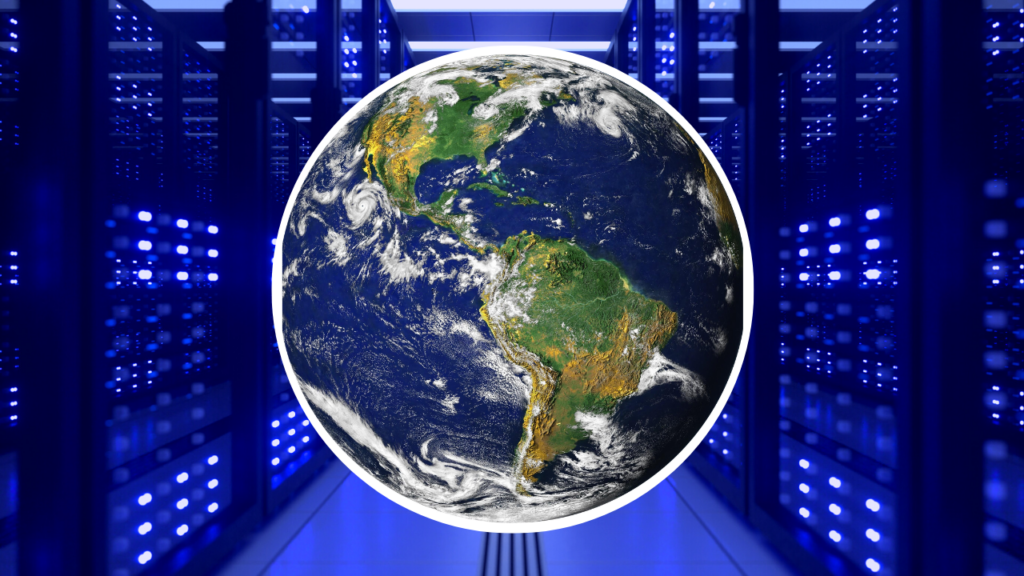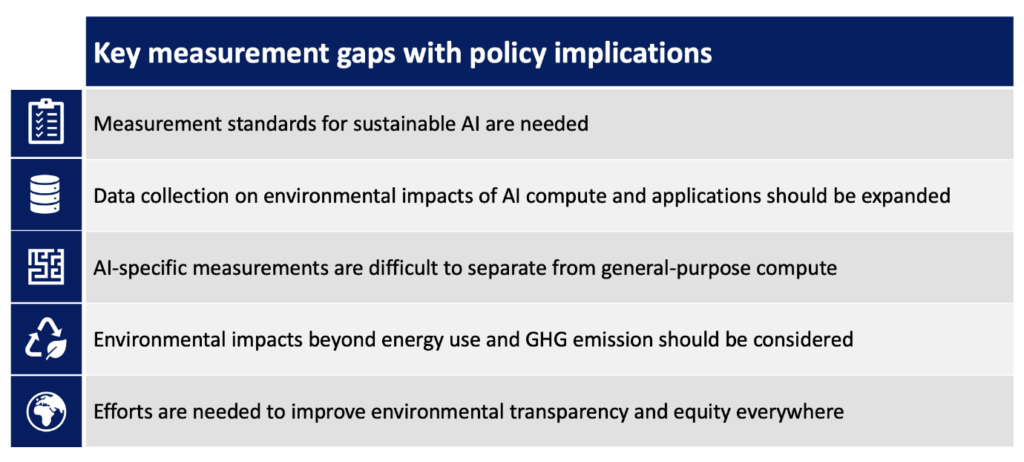Can AI help save the planet?
Our new report looks at the positive and negative effects that AI computing and applications can have on the planet and what we need to do to measure AI’s environmental footprint.

As the world’s climate experts gather at COP27, the window of opportunity to prevent widespread, irreversible damage to our earth is rapidly closing. The year 2022 has seen yet another cascade of record-breaking environmental disasters. The International Panel on Climate Change, IPCC, reported that despite decades of environmental action, global greenhouse gas (GHG) emissions are at their highest level in human history. According to the authors, the next few years will be critical to securing “a livable future for humanity”.
The green and digital “twin transitions”
With time running out to achieve critical environmental targets, the IPCC underlines that if we use digital technologies appropriately, they can contribute significantly to mitigating and adapting to climate change, and the achievement of several Sustainable Development Goals (SDGs). The green and digital “twin transitions” promise to leverage digital technologies for a sustainable future. As a general-purpose technology, artificial intelligence (AI) has the potential not just to promote economic growth and social well-being, but also to help achieve greater global sustainability as the world undergoes mass digitalisation.
However, training and deploying AI systems can require massive amounts of computational resources with their own environmental impacts through energy and water use, GHG emissions, and overall lifecycle impacts. To fully harness AI technologies to achieve domestic economic growth goals and to help meet national and global sustainability goals, policy makers, civil society and private sector actors need accurate and reliable measures of the environmental impacts of AI. However, there is currently a lack of consensus on benchmarks and a shortage of data in this area, meaning such information is not available for evidence-based decisions.
Measuring the AI footprint: Examining direct and indirect environmental impacts
To address this policy imperative, the OECD.AI Expert Group on AI and Climate together with experts from the Responsible AI Working Group of the Global Partnership on AI and its Project RAISE have developed an overview of existing and emerging proxies, indicators, metrics, and tools to help measure the environmental impacts of AI compute and applications. Launched and presented at a COP27 panel this week, the report also proposes an analytical framework to help quantify the environmental footprint of AI.

The framework distinguishes between the direct environmental impacts of AI compute, and the indirect environmental impacts of AI applications. Direct impacts stem from the AI compute resources lifecycle – the production, transport, operations and end-of-life stages. Analysis indicates that direct impacts are most often negative and stem from resource consumption, such as the use of water, energy and its associated GHG emissions, and other raw materials. Indirect impacts result from AI applications and can be either positive, such as smart grid technology or digital twin simulations, or negative, such as unsustainable changes in consumption patterns. A growing number of actors recognise the dual impacts of AI compute and applications, advocating for AI to be channelled to harness the immense opportunities for environmental sustainability while minimising negative effects. These efforts will require cross-disciplinary efforts by scientists, policy makers, civil society, the private sector, technologists and more.
Several good practices for sustainable AI exist, such as using pre-trained models, adopting greener forms of compute to maximize compute density given space constraints and designing more sustainable data centres with renewable resources. Some cloud compute providers are starting to report AI-specific estimates. For example, Google says that its machine learning workloads represented about 15% of its total energy use over the last three years. Such estimates help quantify AI-specific energy use and associated GHG emissions while shedding light on how impacts differ according to whether compute is used to train AI models or to use them.

Five key measurement gaps with policy implications
Going forward, policy makers should ensure that AI is part of the solution to meet global sustainability targets. A starting point is to address five key measurement gaps with policy implications:

COP27 reminds humanity once again how urgently we need large-scale environmental and climate action. To achieve global sustainability targets, AI must be part of the solution. From energy efficiency gains to the discovery and scale-up of clean technologies, AI-enabled innovation can contribute to finding the solutions countries need to meet global sustainability targets. However, as AI applications become more diverse and the computing needs of AI systems grow, both leave environmental footprints that must also be measured and taken into account.
We hope our report will inspire policy makers, researchers, companies and civil society to agree upon indicators and good measurement practices. This evidence base would improve our collective understanding of AI compute’s environmental impact and hopefully lead to diminishing AI’s adverse effects on the environment while enabling its potential to accelerate action for the good of the planet.
The OECD Secretariat would like to thank the members of the OECD.AI Expert Group on AI Compute and Climate and Global Partnership on AI (GPAI) Responsible AI Working Group for their input and feedback. In particular, the OECD Secretariat would like to thank the Co-Chairs of both groups, listed below. The report’s contents benefitted greatly from their contributions.
- Keith Strier, Co-Chair of the OECD.AI Expert Group on AI Compute and Climate, Vice President of Global AI Partnerships, NVIDIA
- Jack Clark, Co-Chair of the OECD.AI Expert Group on AI Compute and Climate, Co-Founder, Anthropic
- Jennifer Tyldesley, Co-Chair of the OECD.AI Expert Group on AI Compute and Climate, Deputy Director for Economic Security, UK Department of Culture, Media and Sport
- Raja Chatilla, Co-Chair of the GPAI Responsible AI Working Group Project RAISE, Professor Emeritus, Sorbonne Université
- Nicholas Miailhe, Co-Chair of the GPAI Responsible AI Working Group Project RAISE, Founder and President, The Future Society
- Lee Tiedrich, Co-Chair of the GPAI Responsible AI Working Group Project RAISE, Distinguished Faculty Fellow in Ethical Technology and Law Professor, Duke University
The OECD Secretariat would also like to thank the esteemed panellists who participated in the report’s launch at the OECD COP27 Virtual Pavilion on 15 November 2022:
- Stephanie Ifayemi (moderator), Head of Policy, Partnership on AI
- Peter Addo, Head of Emerging Tech Lab – Agence Française de Développement (AFD)
- Ronny Rodríguez Chaves, Energy Deputy Minister, Ministry of Environment and Energy, Costa Rica
- George Kamiya, Expert on climate impacts of digital technologies, former International Energy Agency (IEA)











